From a young man of good hopes, capable of infusing humanity and formal purity into the albeit crude realism, to a great forgotten of Italian art, between the two wars and in the second half of the last century. Francesco Ciusa (Nuoro, 1883 - Cagliari, 1949), from Nuoro, trained in Florence, made his debut at the age of 24 in 1907 even in Venice with La madre dell’ucciso , receiving the immediate praise of critics such as Ugo Ojetti and Margherita Sarfatti, so much so that he was counted, according to the recollection of his friend Lorenzo Viani, as the “young triumphant painter of the Biennale of that year.” Then a long activity, between Sassari, Nuoro, Cagliari, Oristano and finally Orgosolo. But always and only within the confines of the beloved, reinterpreted Sardinia. With the difficulty, all the more so for a sculptor and moreover of large works, of staying in touch with the market (he never had a gallery owner) and with exhibitions on the continent. Not to mention the bombings of 1943 in which his studio in Cagliari chock-full of works was destroyed, but also his masterpiece, in the Viennese Secession vein, namely the decoration of the Hall of Councillors in the Civic Palace. Hence the substantial disinterest on the part of the Italian art historical establishment for Francesco Ciusa, celebrated almost only on his island. Now in Nuoro is staged (it opened Sept. 13 and will remain open until April 5, 2026) the largest exhibition ever mounted on the artist, who at only 24 years old, with the old barbaric woman locked in her dignified grief over the murder of her son, made her mark at the Venice exhibition (immediately after 1907 the bronze was purchased for the National Gallery of Modern Art in Rome, where it is preserved).
Francesco Ciusa, the Form of Myth (this is the title) was organized by the Fondazione Ilisso of Nuoro’s publishing house of the same name, which-a year after the publication of the most recent monograph on Ciusa, entrusted to the pen of Elena Pontiggia after the previous ones edited by Rossana Bossaglia and Giuliana Altea (1990 and 2004, same publishing house)-brought together ninety works by the master: mainly sculptures, ceramics, furnishings and drawings, but also a single, striking painting of exquisite Divisionist workmanship: The Supper of the Dead (private collection, restored for the exhibition) from around 1910, showing the table prepared for the dead according to the ritual of southern tradition. In forty years of work, but the parable closed substantially and melancholically in the 1930s, Ciusa held together the large format of works for public spaces (such as the ill-fated monument to Sebastiano Satta in Nuoro or those to the fallen in Iglesias and Cabras) with the more intimate dimension of private family affections; he combined realism, symbolism and purism; he juxtaposed bronze to stucco to marble, but also ceramics to furniture made of wood and wrought iron (one room of the exhibition is all for chairs, bedside tables and lamps while a gigantic chandelier finds its place in the Ilisso bookshop); he shaped in clay his sculptures before entrusting them to plaster casting or pushing them into the kiln to turn them into terracotta; and so he did with boxes or wedding favors in the same material, but enlivened with the colors, given cold, of traditional Sardinian clothing. In short, a horizontal approach to the world of creativity on the part of this son of a modest cabinet-maker from Nuoro who, thanks in part to the Spica company (1919-1924) and the school of applied arts in Oristano (1925-1929) that he created, was was a participant between the nineteenth and twentieth centuries in the great international movement-from Arts and Crafts to the Bauhaus to the Futurist Art Houses-of rediscovering craft applied to artisanal or industrial production.
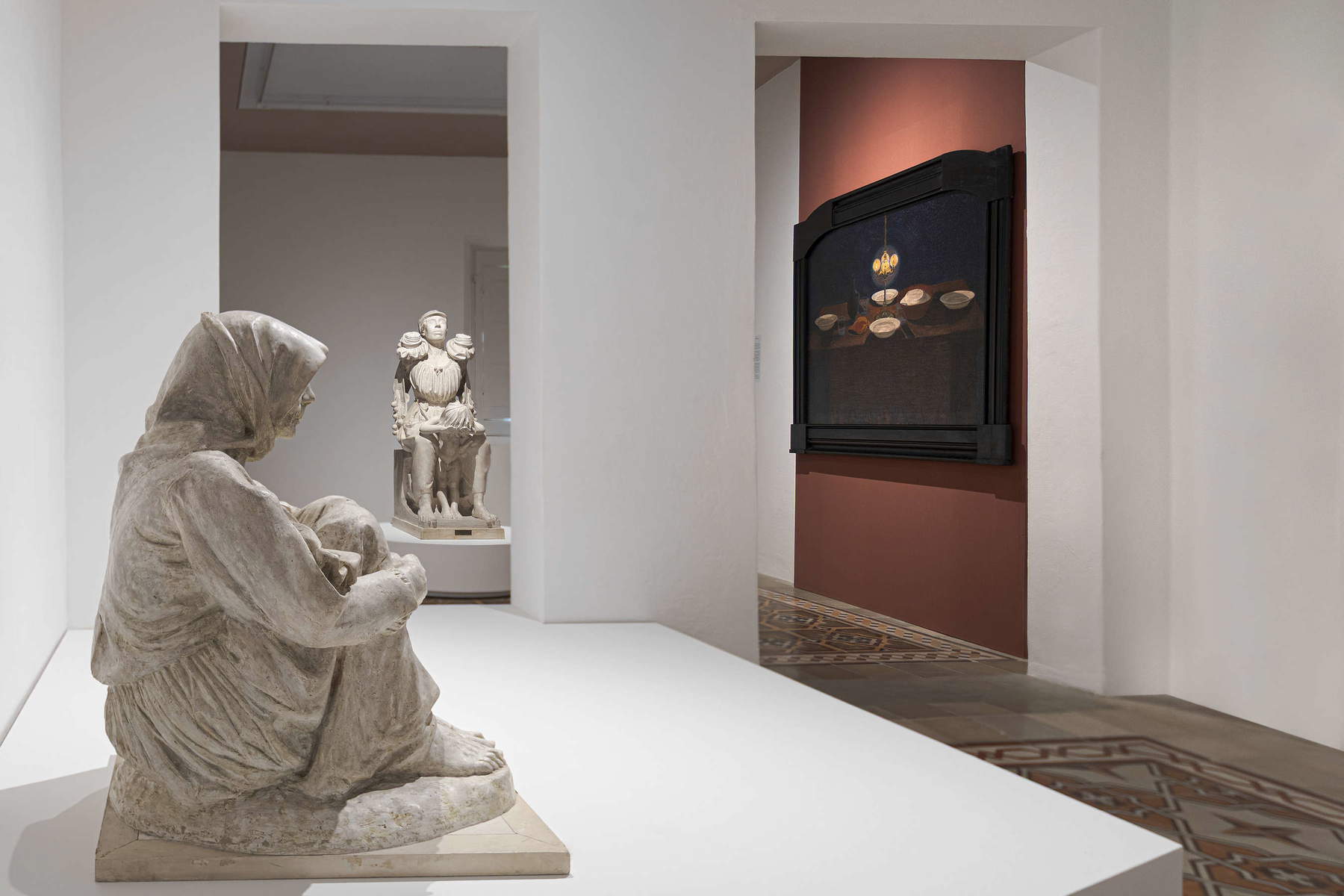
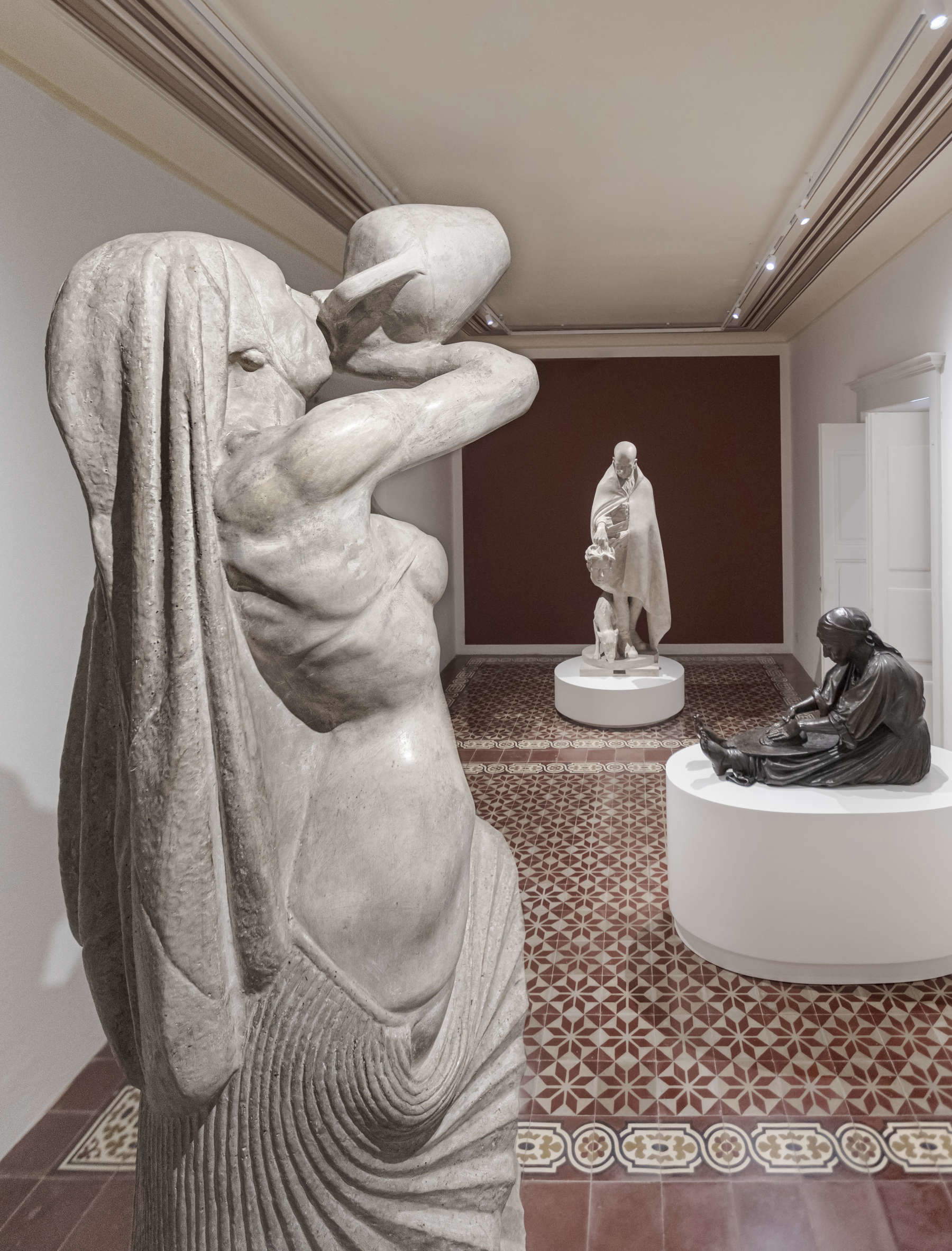
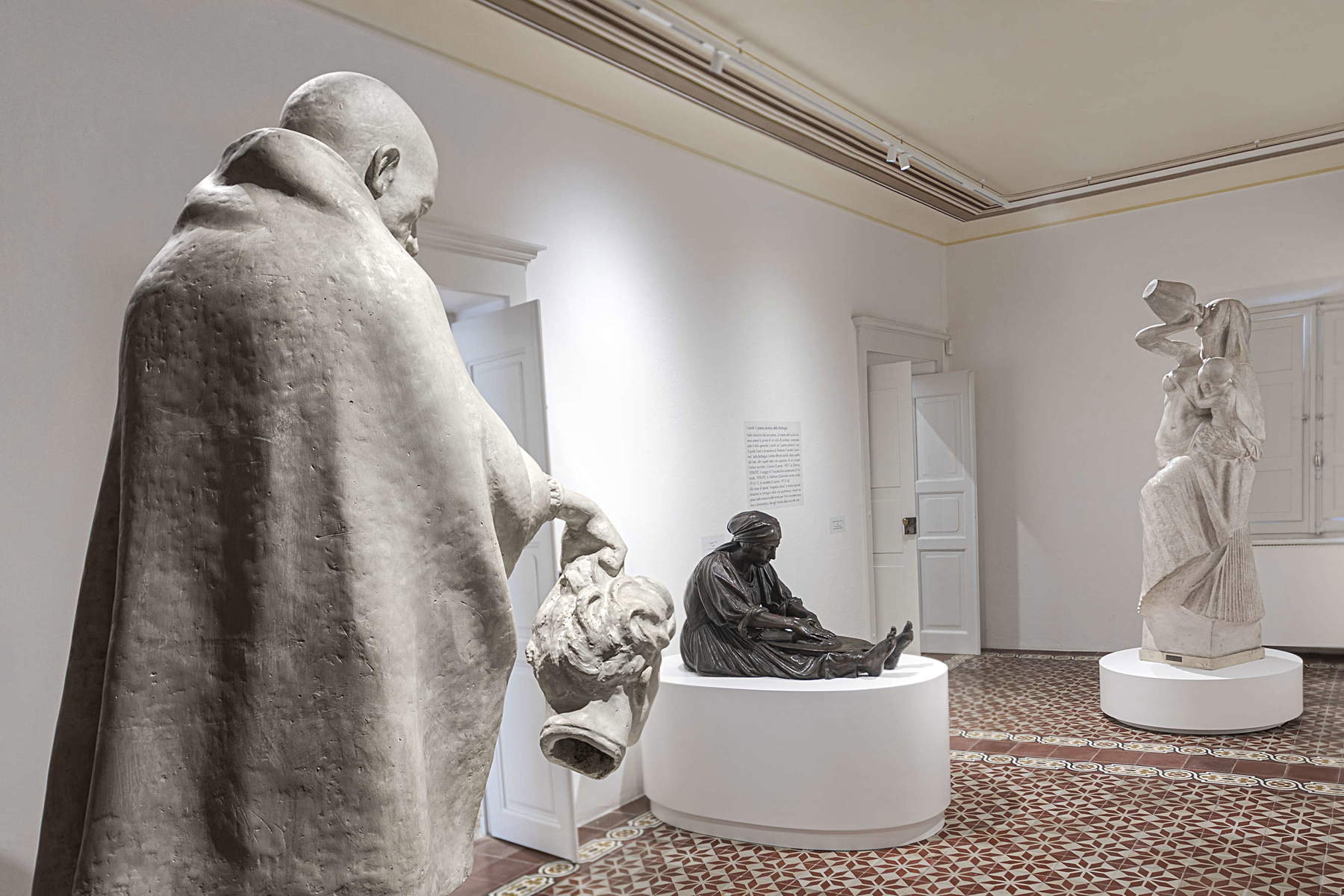
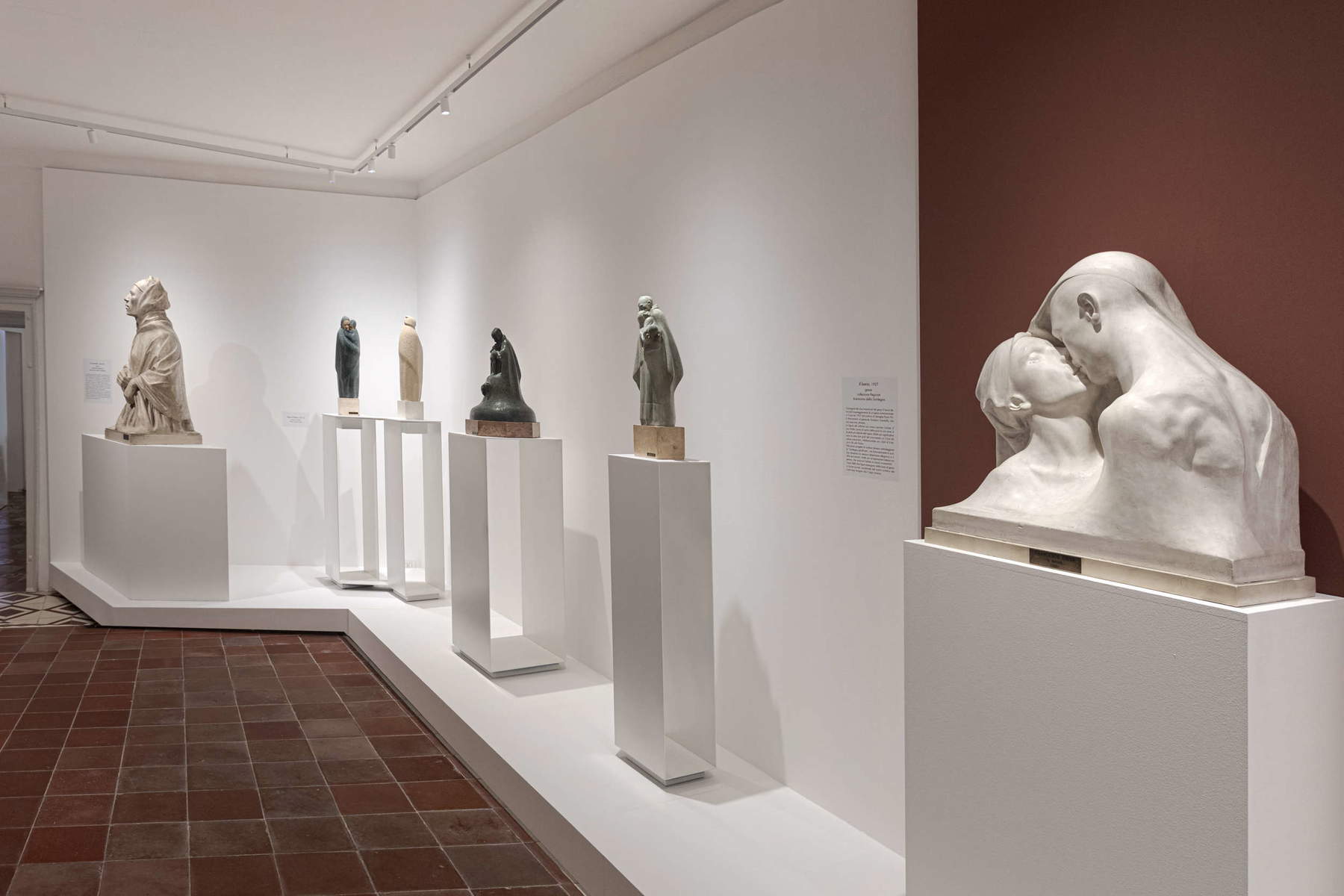
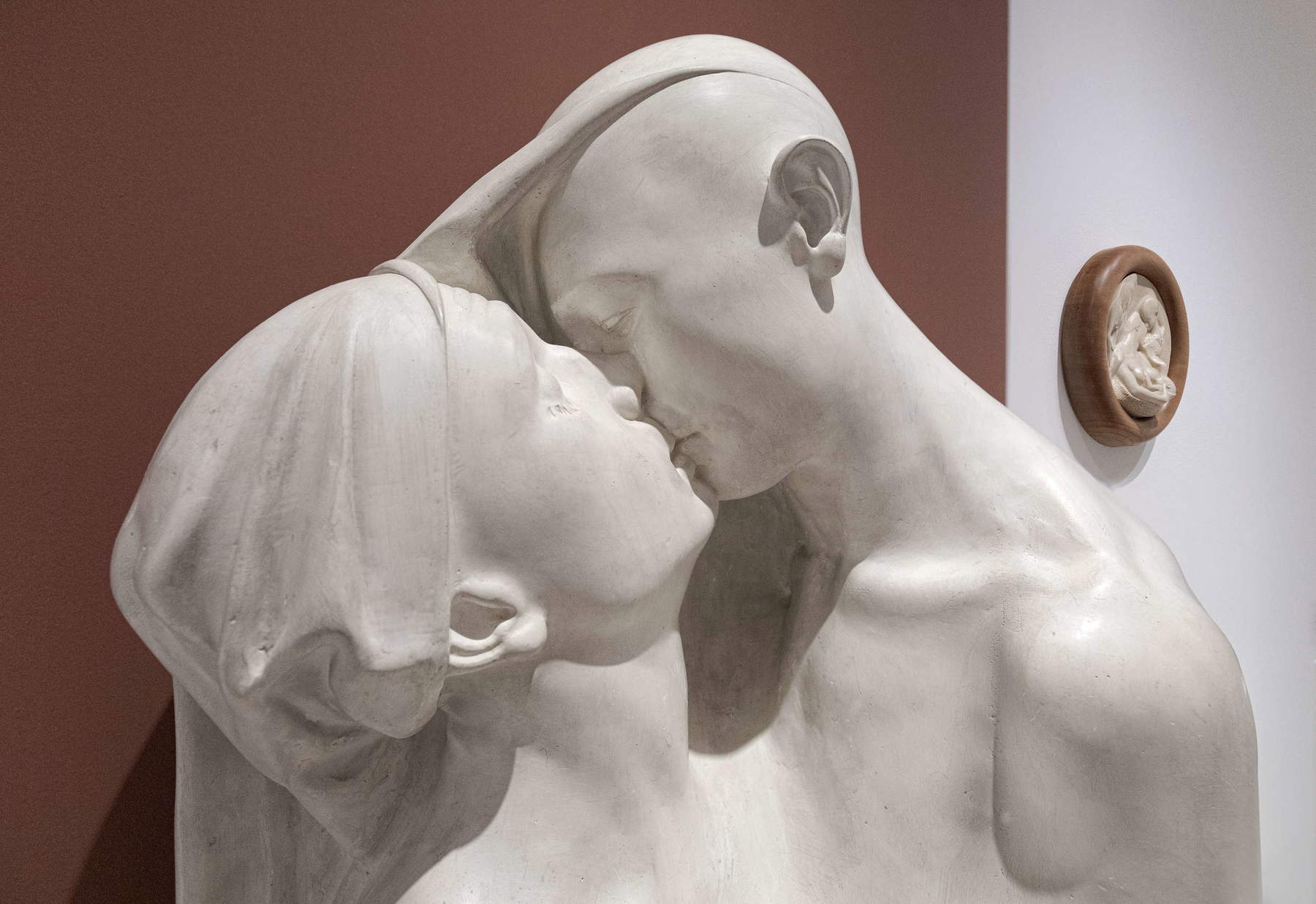
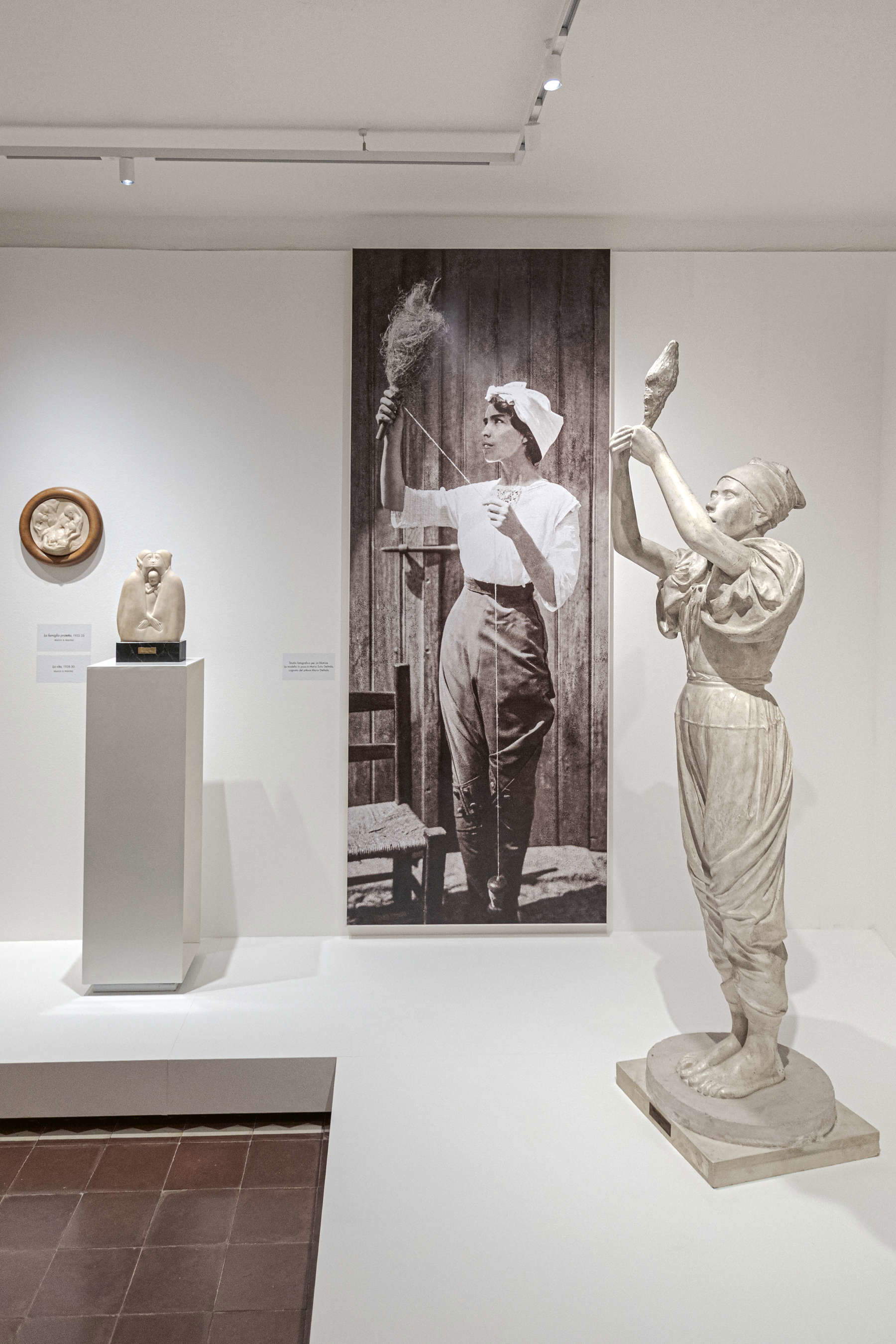
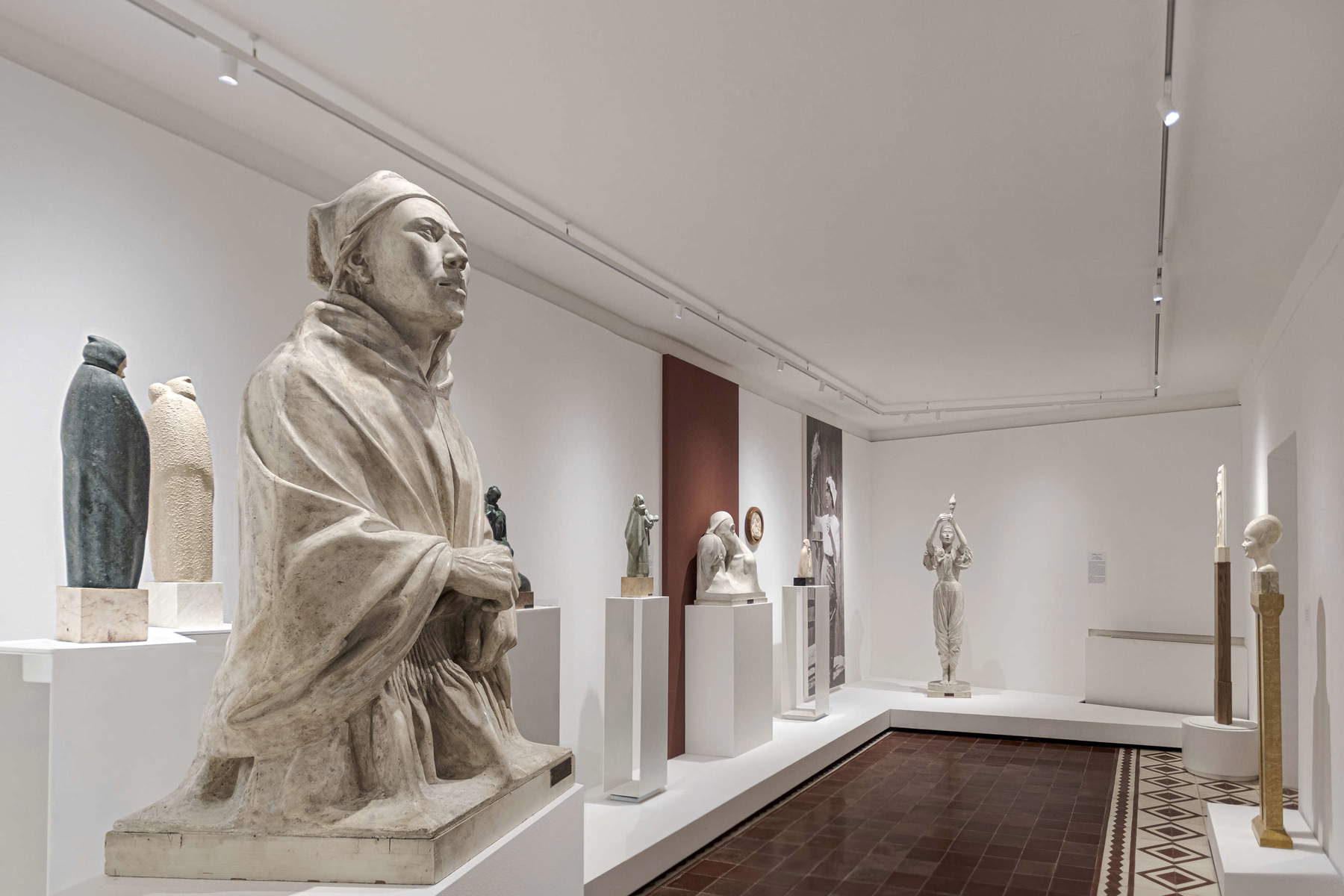
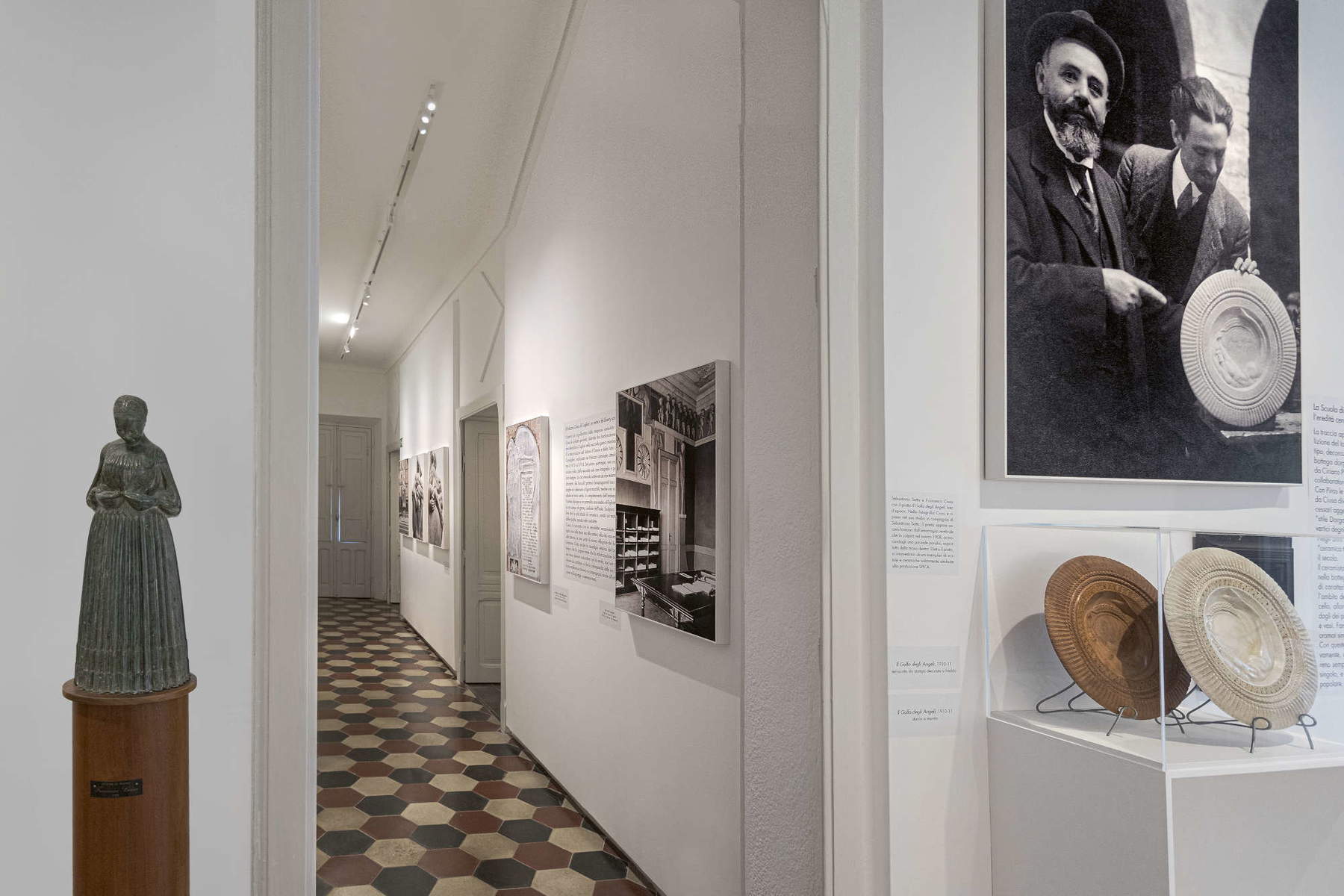
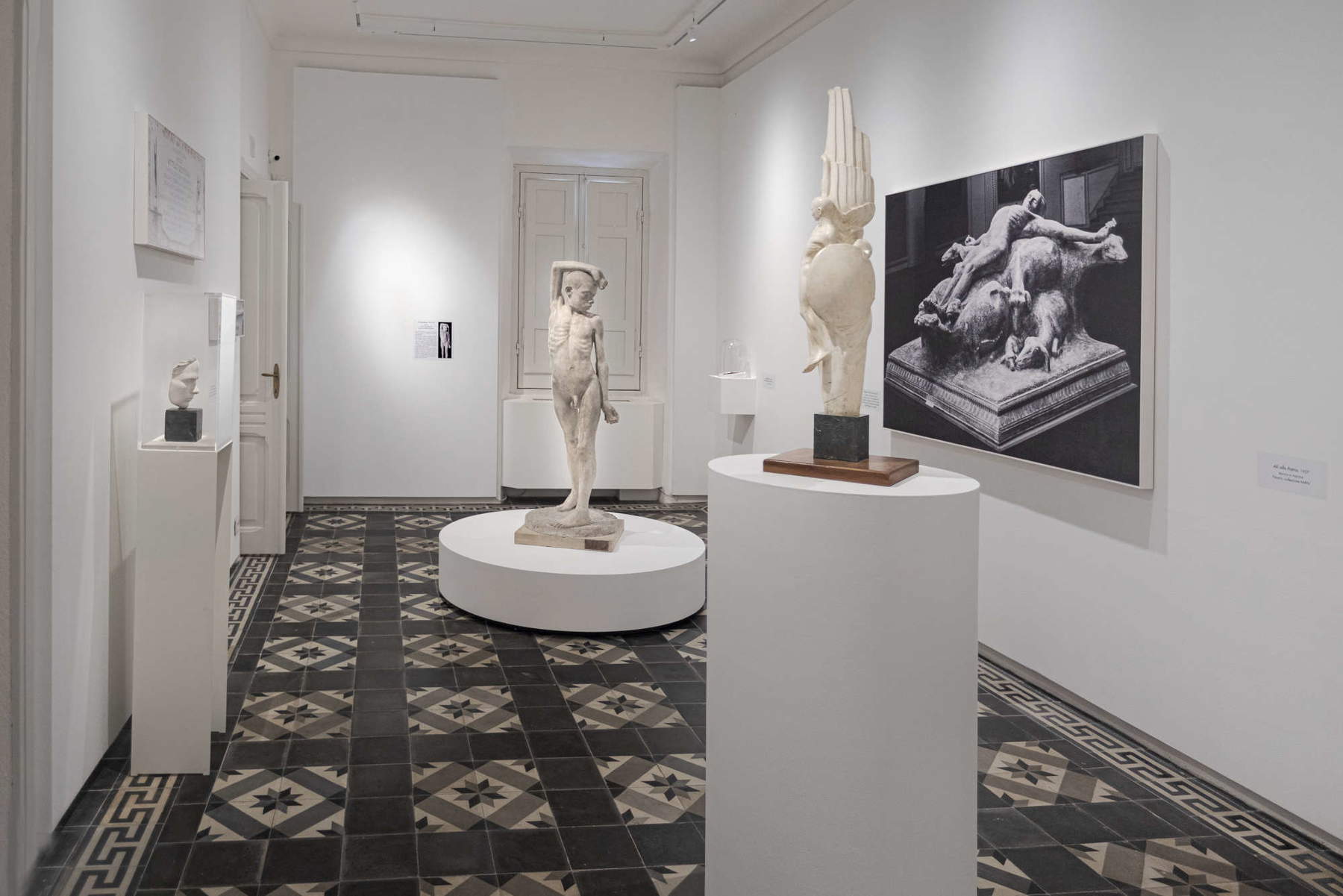
It is precisely the focus on serial ceramic production that is the distinctive aspect of this anthological exhibition, half a century after the Nuoro artist’s 1974 one. Elena Pontiggia, a great expert on the art of the Italian twentieth century, has gathered there what she wrote in the extensive 2024 monograph - full of pregnant connections to the works of Rodin, d’Orsi, Meštrović, Wildt - and synthesized now in the agile exhibition catalog. The small volume (155 pages, 10 euros) reports the news of an invitation that came to Ciusa from an American industrialist, in the aftermath of his 1907 success with Mother of the Killed at the Venice International Kermesse, to go to New York “to run an applied art workshop.” This would seem to mean that the Sardinian sculptor’s involvement in the applied arts should be backdated by more than a decade from the founding in 1919 of the Spica manufactory, an acronym for the “Society for the Artistic Ceramics Industry,” which was closed after only five years due to economic difficulties despite having as its logo precisely the auspicious symbol of abundance of the ear of wheat.
Another element that confirms the early attention to the applied arts by the artist who, with the writer Grazia Deledda, Nobel laureate for Literature in 1926, and with the poet and his friend Sebastiano Satta, made Sardinian culture known beyond the borders of the island and Italy, comes from the giant photo in which Ciusa holds the 1910-1911 Il Golfo degli Angeli plate (two versions are on display in the exhibition). In the shot (the enlarged period images are a significant feature of the exhibit designed by architect Antonello Cuccu, as they are almost always linked to the works on display) he is standing next to Sebastiano Satta, who was later struck by a stroke in 1908 that paralyzed his right hand (he died at age 47 in 1914): in the photo, which almost certainly precedes the poet’s illness, one can in fact glimpse, on the right, precisely those childlike heads that characterize Ciusa’s polychrome ceramics. A world, his, made up of smiling or desperate children and mother girls whose innocence is embellished by the multicolored bonnet of the Desulo dress, up to the delicate figure of the Bride of Nuoro (in the exhibition we find her in three examples) forced to unfasten her too-tight bodice because she is now expecting.
Whatever the date of these sculptures of his in terracotta or marble stucco (the marmorino of the Roman tradition), the fact remains that Ciusa infuses into the clothes of the Sardinian folk tradition, particularly the Barbaric, the echoes of the great art of the Renaissance that he got to know while attending, between 1899 and 1903, thanks to a scholarship from the Municipality of Nuoro, the Accademia di Belle Arti in Florence. On the banks of the Arno, the boy, whom a photo of the time depicts as disheveled, easygoing and bohemian, attended courses in Plastica d’ornato and the Scuola libera del nudo and had young, talented friends in Libero Andreotti, Lorenzo Viani, Plinio Nomellini, Galileo Chini (perhaps even Amedeo Modigliani). In the city of the Lily, Ciusa learned the foundational importance of Florentine drawing and saw, among other things, the Della Robbia’s glazed terracottas whose whiteness of flesh is echoed in the Fanciulla di Desulo usually exhibited-as are several other works, mainly in marble stucco, but also the exceptional bronze with the seated woman making The Bread (1907)-at the foundation’s Spazio Ilisso hosting the exhibition.
The main collection that has lent the pieces, however, is the Region of Sardinia. Out of its storerooms have come the large-scale plaster casts (sadly closed now for eight years due to works at the Tribu Municipal Museum in Nuoro, dedicated to Ciusa, which had them on loan) that stand to mark the artist’s participation in the Venetian Biennale: in 1909, for example, when he exhibited the graceful Filatrice and the mighty Nomade (the Sardinian wayfarer, almost the Efix reduced to a beggar of Canne al vento, has his lips half-closed and shows his teeth, according to that vital spirit of sculpture invented by Bernini’s Baroque genius); or in 1914, when he presented in the Lagoon the Cainita (Cagliari, Galleria Comunale) where the epigone of thebiblical murderer holds suspended the severed head of his victim (the face, almost a cast, is a portrait by his pupil Federico Melis, a talented ceramist, while a large dog drinks the blood as the little dog does in Titian’sApollo and Marsyas ) and appears enclosed in a cloak whose shape cannot fail to recall Giotto’s volumes or Donatello’s plastic (the murderer’s face recalls Zuccone).
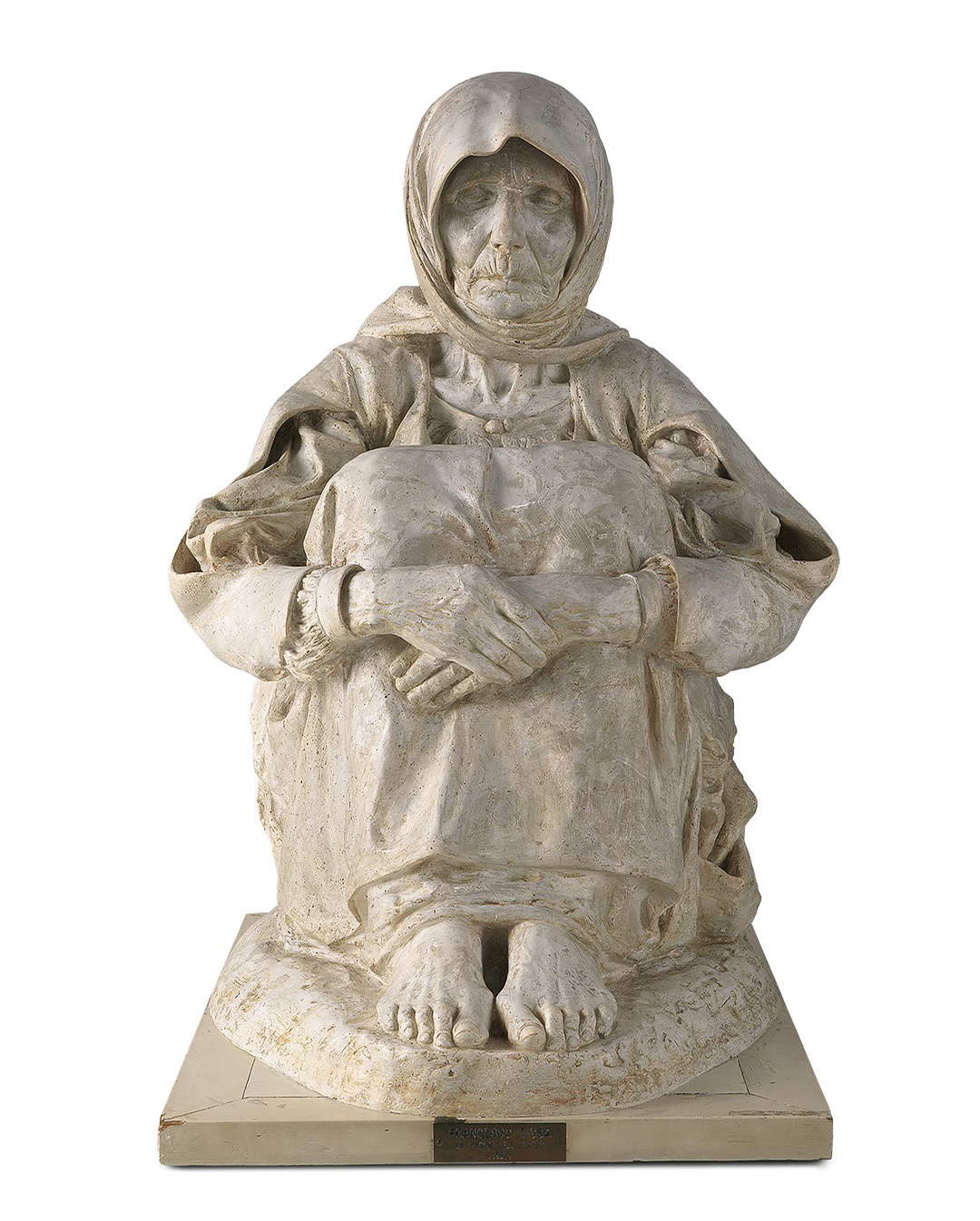
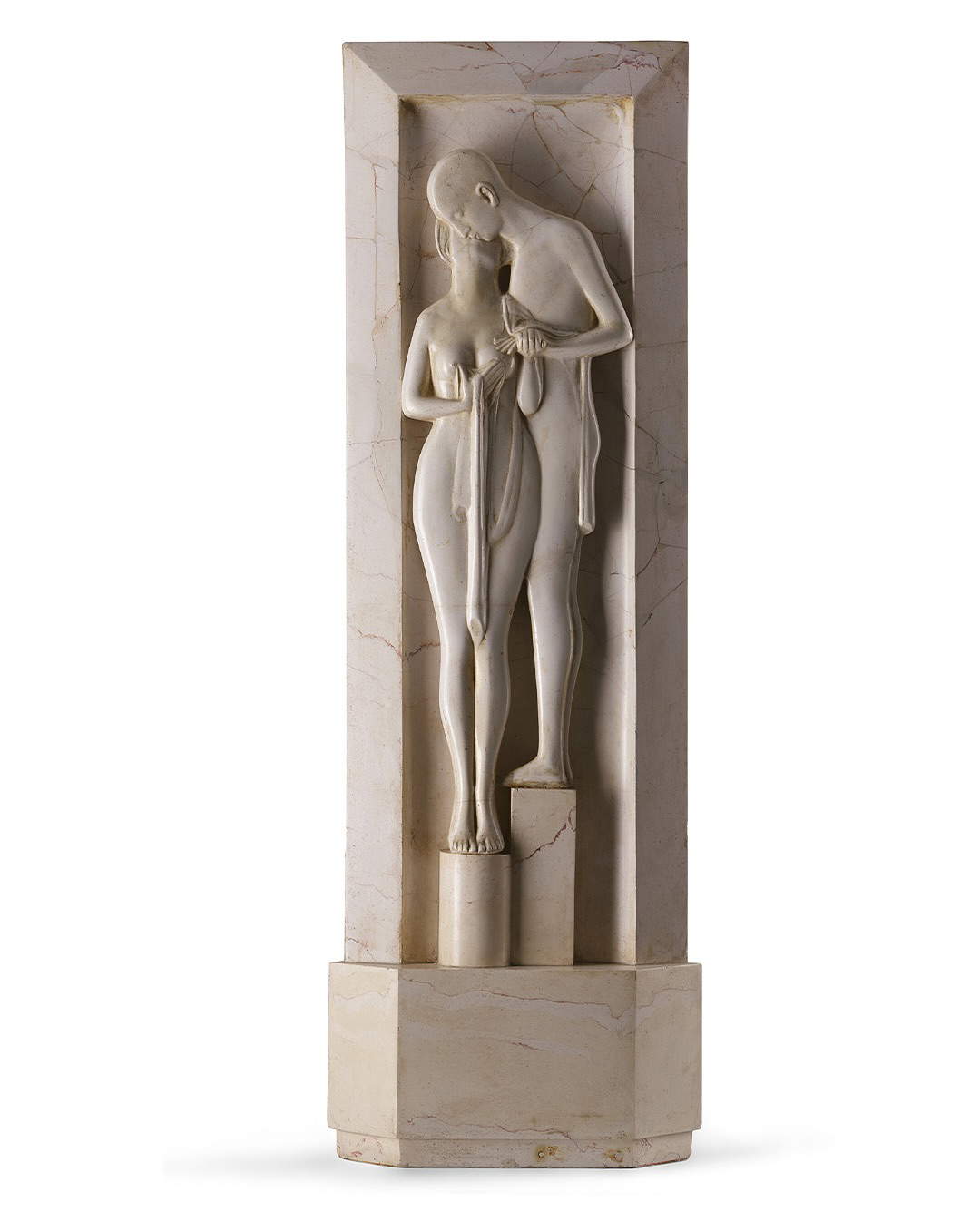
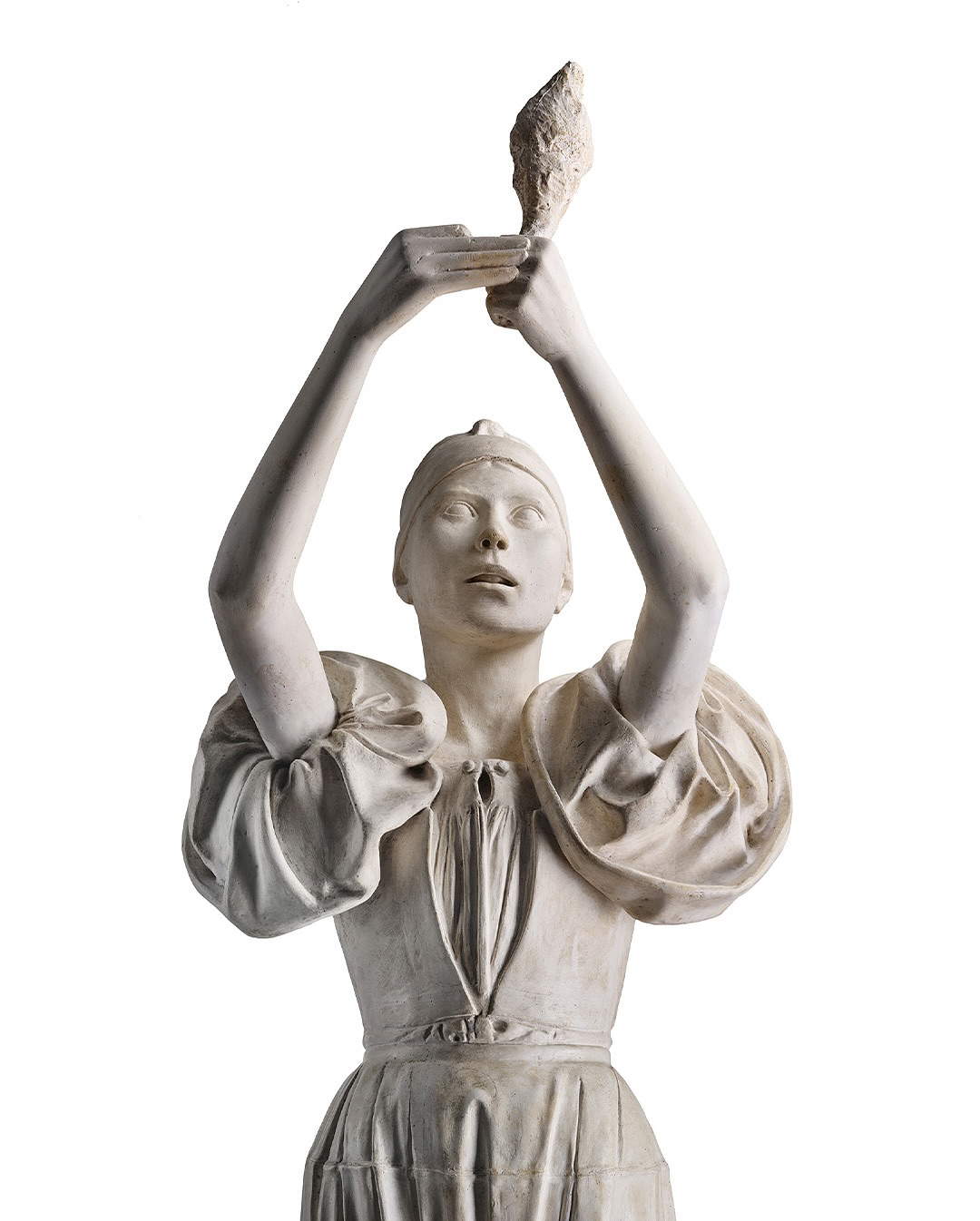
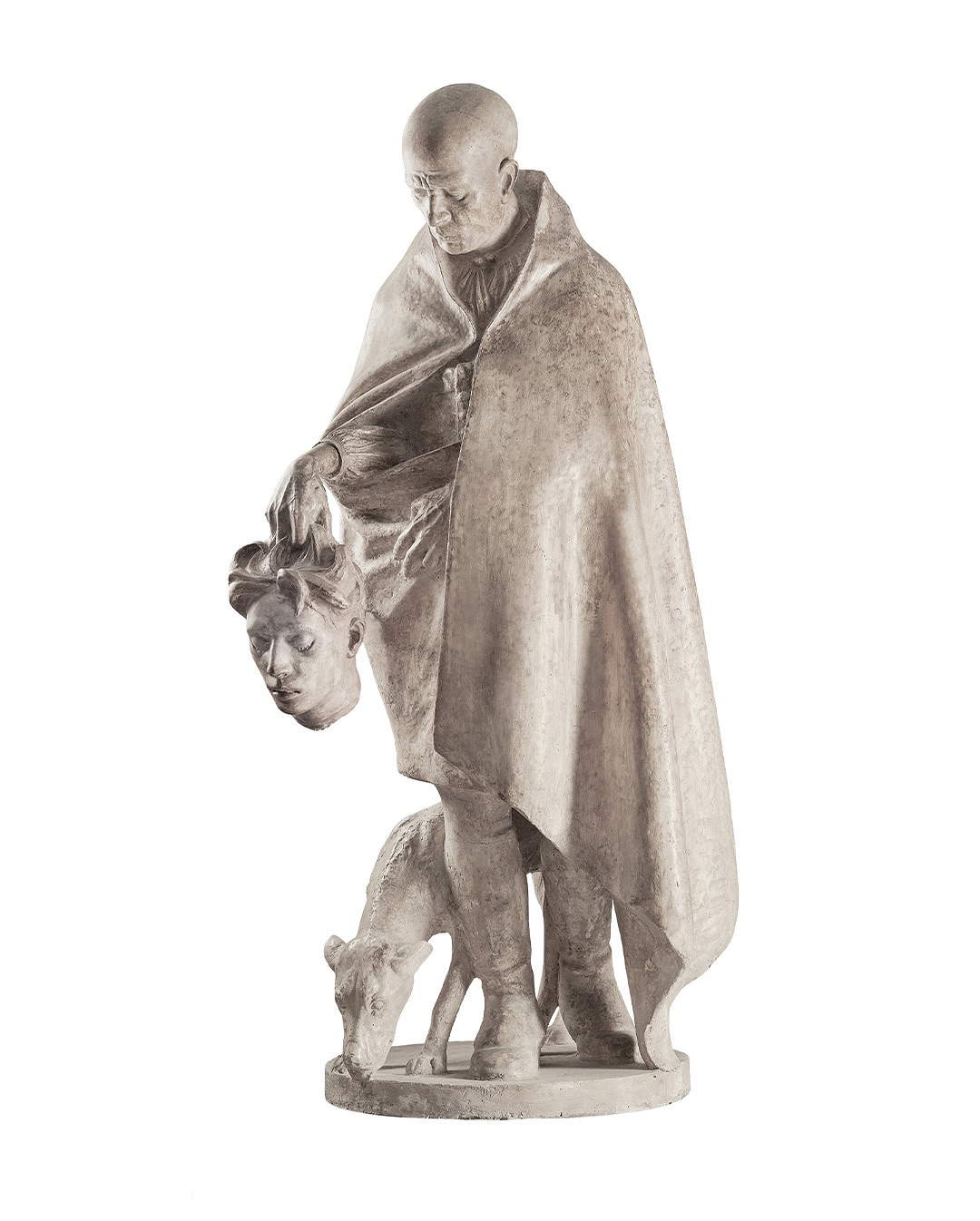
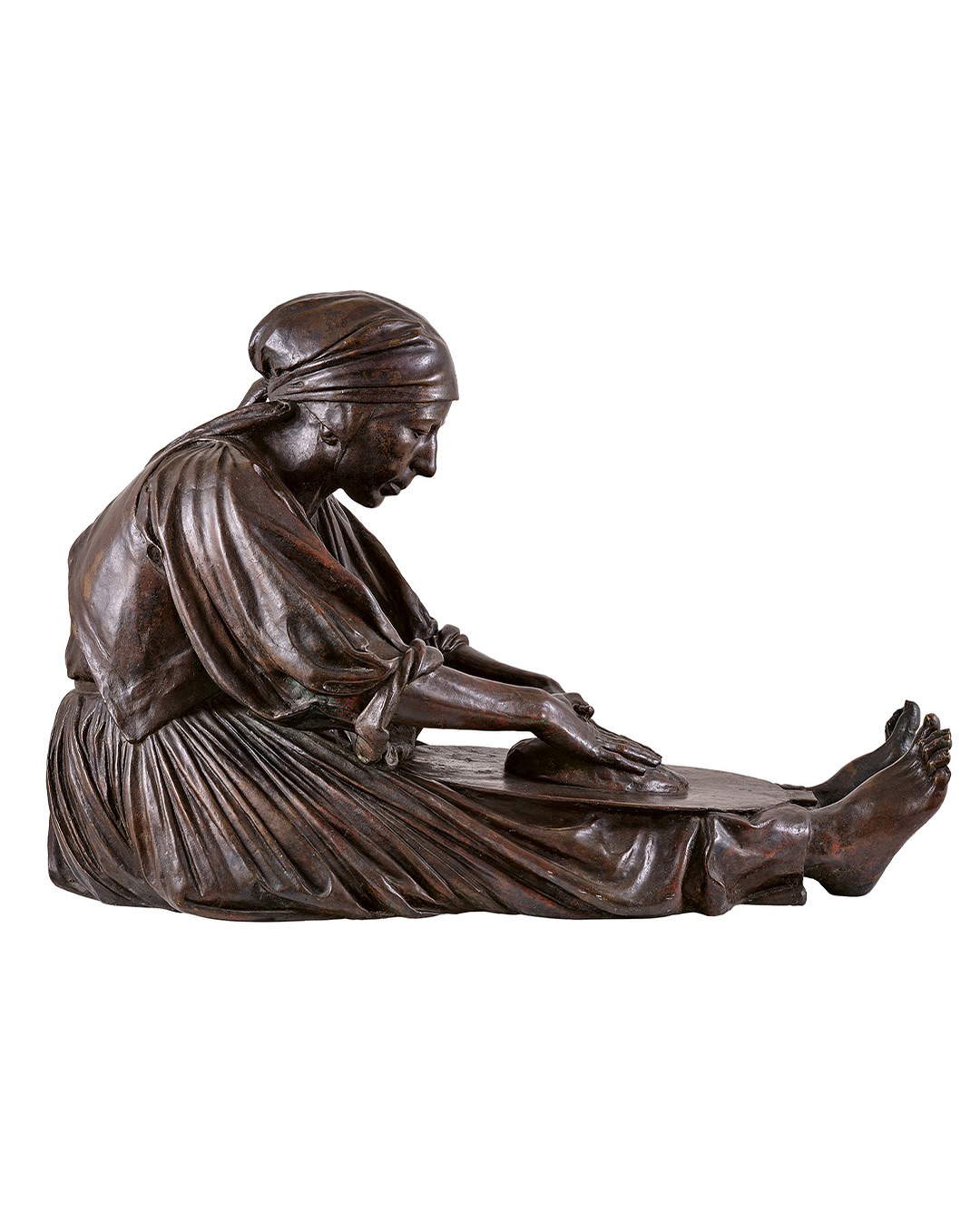
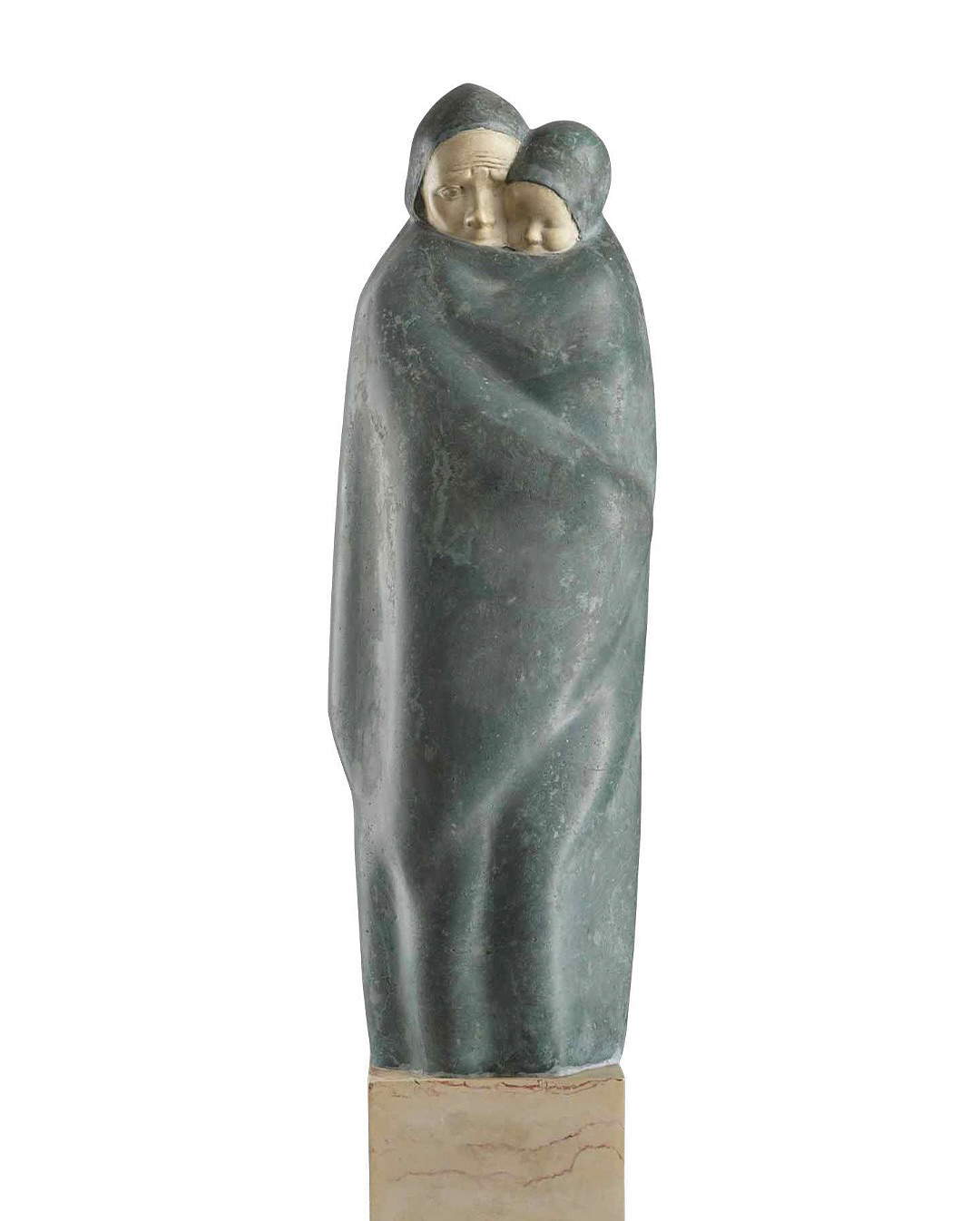
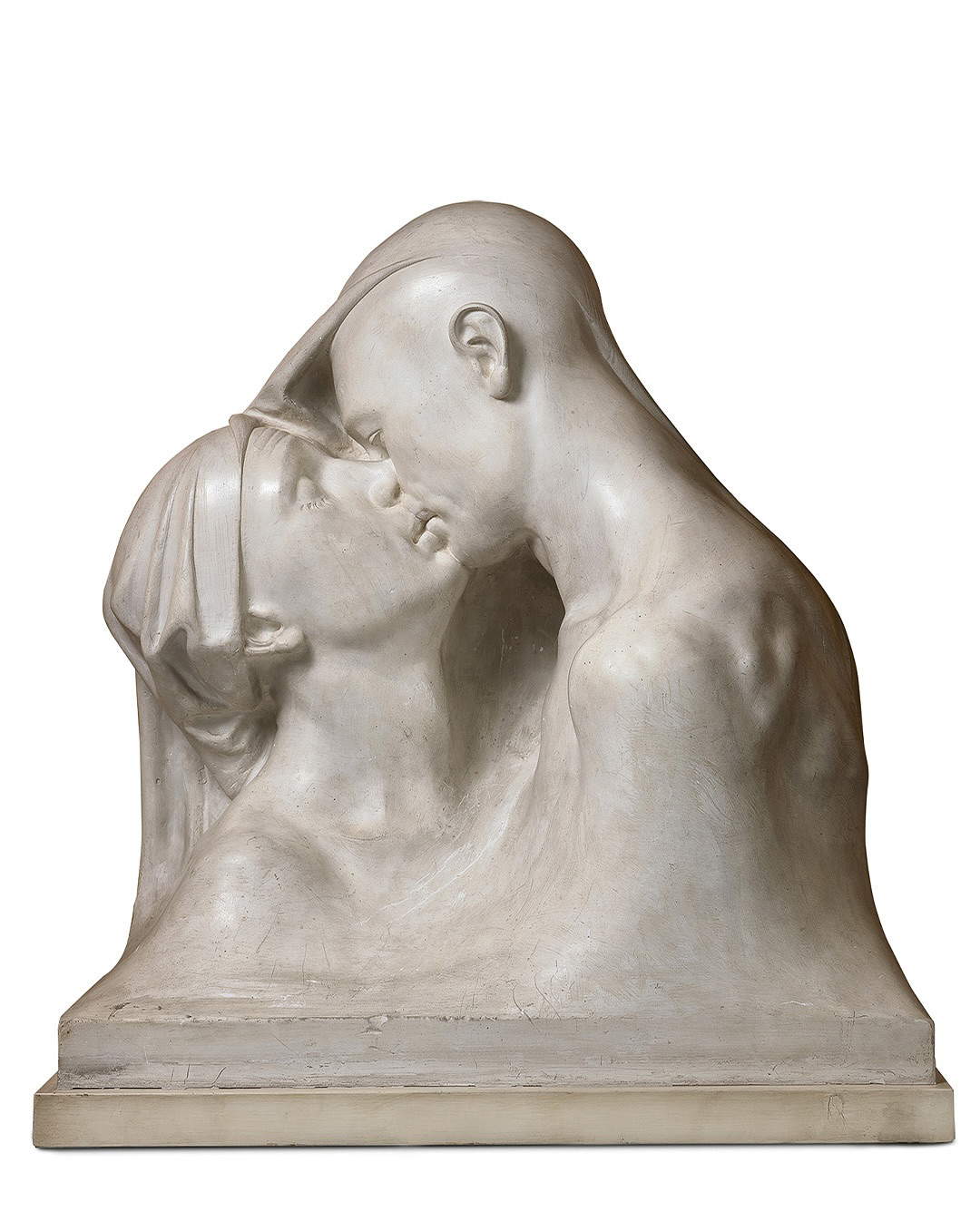
Another Florentine great, the supreme Michelangelo, is explicitly mentioned, for example, in Ciusa’s other victim of barbaric violence, the Sorrowful Sardinian Soul (now of the Region, the plaster participated in 1911 in the International Exhibition in Rome): in the child between the legs of the woman begging for vengeance, he echoes, in fact, the Son in Buonarroti’s Madonna of Bruges . Also of plaster is theAnfora sarda, also from the Region, from 1926-28, chosen as the exhibition’s cover because of the loveliness of the nude, the grandeur of the figure of the mother (the sculpture is almost two meters high) who quenches her thirst while suckling the child attached to her breast, the thrust from below that leads the form to free itself from the déco and from the folds of Greek drapery, to assume a posture in line with the classical canons of the return to order (the work was received coldly by critics in 1928 at the Venice Biennale, where Ciusa would never set foot again).
But if, wandering through the rooms of the bourgeois mansion that houses Spazio Ilisso in which Ciusa’s works are grouped not in chronological but in thematic and typological order, we were to point out a group of works that best reflect the artist’s profound spirit, then we would linger in the kissing room. The subject, quintessentially Klimtian, finds expression in roundels, bas-reliefs, whole figures, composite groups, in which the lips open in sensual gestures (the kiss of pacified Sardinia of 1927; collection of the Region), or of love toward children on the part of the mother(The Protected Family of 1922-1923 from a private collection) but also of the father(The Bell, 1922-1923; Spazio Ilisso). In The Return of 1920-1923 (two versions exhibited, one in terracotta the other in marbled stucco) the form melts into emotion before the figure of the shepherd who wraps in orbace his newfound companion and supports her as if she were a deposed Christ. The reunion of the newlyweds is in fact in the grief over the loss of their son: “The death of the little one,” writes Elena Pontiggia, “is poetically rendered by the artist through the little body that plummets forward and which the parents are unable to hold back.” And here Ciusa probably “transposes the painful mourning” for the death of the last of the seven children he had with Vittoria Cocco, the small and beloved Giangiacomo.
Warning: the translation into English of the original Italian article was created using automatic tools. We undertake to review all articles, but we do not guarantee the total absence of inaccuracies in the translation due to the program. You can find the original by clicking on the ITA button. If you find any mistake,please contact us.